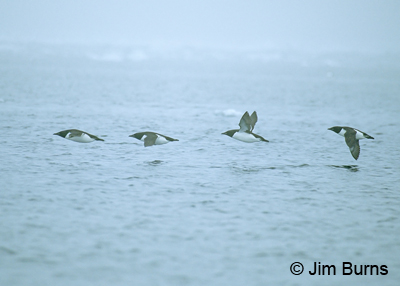
About an hour out on the pack ice we come to the first lead. It looks to be four feet wide. The snowmobiles stop, the komatiks slide to a halt. Jollie jumps off his machine to confer with the other three guides. They walk the edge of the lead in both directions, generations of Arctic experience weighing into the decision to cross. We go one at a time, Deva and I in the first komatik. We look down as the open water flashes beneath the runners. We glance at one another, eyeballs rolling beneath our sunglasses. We are in bright red survival suits for warmth and for flotation in case there is a mishap on crossings like this. It takes two heartbeats. Our komatik clears. We exhale.
Jollie is mid-twenties but could pass for forty. Life above the Arctic Circle will do that. Jollie is a smoker despite losing both parents to lung cancer before they were thirty. He was good enough at hockey to have been offered a full college scholarship in the U.S. He lasted three months before homesickness pulled him back to the white wilderness. Guiding has been his lifeline on the decline into the anomie and apathy that has led so many of his peers to drugs and alcohol.
We’ve birded several places we thought we could spend part of a lifetime. The far north was not one of them. Anyone who has birded the Arctic or thought about it, anyone who has given a thought to the terrible social issues facing native societies with one foot in the old ways and one in the twenty-first century should see On The Ice, a movie filmed in Barrow, Alaska using native actors which came out the first week of April.
The week we spent in Barrow last June was not spent on the ice but on the tundra looking for sea ducks, and though we ate daily at Arctic Pizza mentioned in the movie and drove daily past the cemetery shown in the opening scene, we had little interaction with the native Inuits. No, the movie resonated with us because of our experience ten years earlier at Pond Inlet, Baffin Island, Nunavut, Canada, a trip that was spent on the ice largely amongst the natives, many of whom we came to know well.
One synopsis of On The Ice speaks of the “comfortable claustrophobia” of Barrow, something we felt most palpably in the tent camps on the pack ice off Baffin Island as we looked for Arctic species, met hunting parties out for Narwhals, and dealt with the surreal, relentless cold, monochrome white terrain, and twenty-four hour daylight of early summer on the ice. Though we saw no evidence of drug use itself, we encountered alcoholism in the town and heard the stories of lives lost, literally and figuratively, from our guides around the camps.
The plight of a people exposed to the dark side of life on the outside while experiencing some of its benefits, but unable either emotionally or economically to escape the old ways left impressions far more indelible than the memories of shorebirds in nuptial plumage and sightings of the rarest of Arctic species. The use of native actors who are living this life renders On The Ice incredibly moving and powerful—the rhythm of their culture, the strength of family, the hopelessness of the downward spiral. See this film. You won’t like the ending, but you’ll be thinking about the message for a long time.
